Design Education
Jing Shan (JS) Design Education programme equips students with Emerging 21st Century Competencies (E21CC)through design, play, and making. Using the JS Design Protocol, students tackle real-world challenges, prototype solutions, and iterate designs. The programme integrates structured learning, open-ended exploration, and supported by a dynamic Makerspace environment, fosters creativity, collaboration, and independent problem-solving in students.
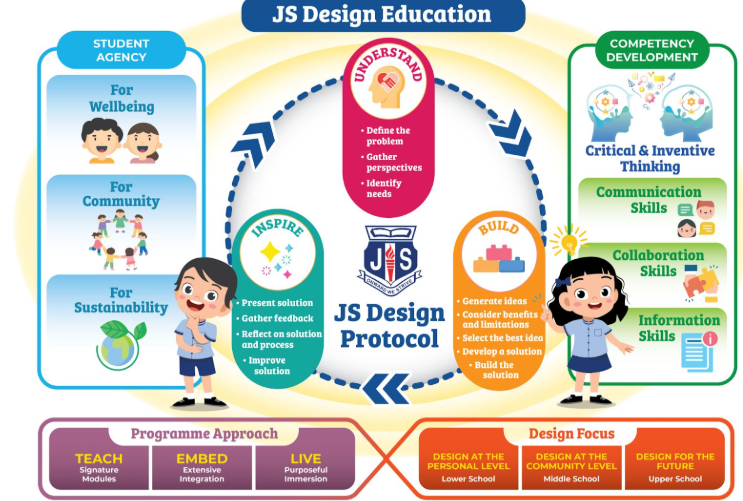
JS Design Protocol
The JS Design Protocol guides the students in a series of steps in the design and making experience, to nurture them in critical and creative thinking. Through the experience, students bring about advocacy in the areas of well-being, community and sustainability.
The JS Design Protocol consists of three stages: Understand, Build and Inspire.
At each stage, students are guided through a series of steps to help them
develop a solution that fulfils a design challenge. Through the Protocol,
we also aspire to inculcate in students the mindset of continual improvement,
hence the cyclic nature of the Protocol.
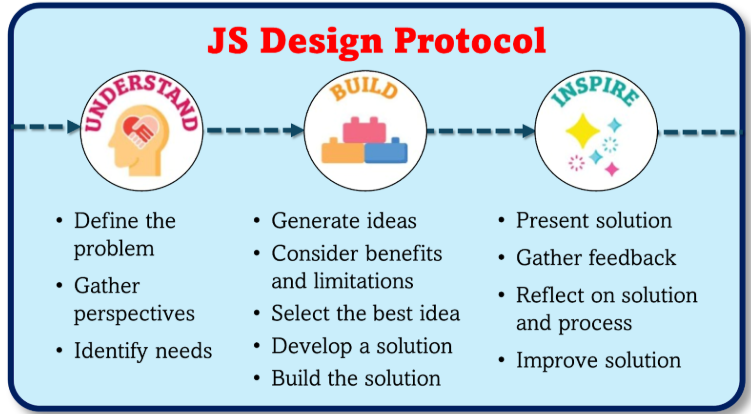
“Teach, Embed, Live” Approach
To create a structured and immersive experience, students are exposed to the Design Education programme through the "Teach, Embed, Live" approach:
-
Teach: Students learn problem identification, ideation, and prototyping in Signature Modules. “Signature Modules” are learning experiences that are designed within existing subjects/programmes, e.g. PAL and Art. Working together with the subject teachers, the team provides expertise to infuse design activities into these learning experiences.
-
Embed: Students apply these skills across CCAs and interdisciplinary projects, reinforcing their learning. These learning experiences are enhanced with design and making tasks.
-
Live: A culture of design and innovation is nurtured through recess activities and school-wide events. These activities provide students the opportunities to practice their design and making skills independently.
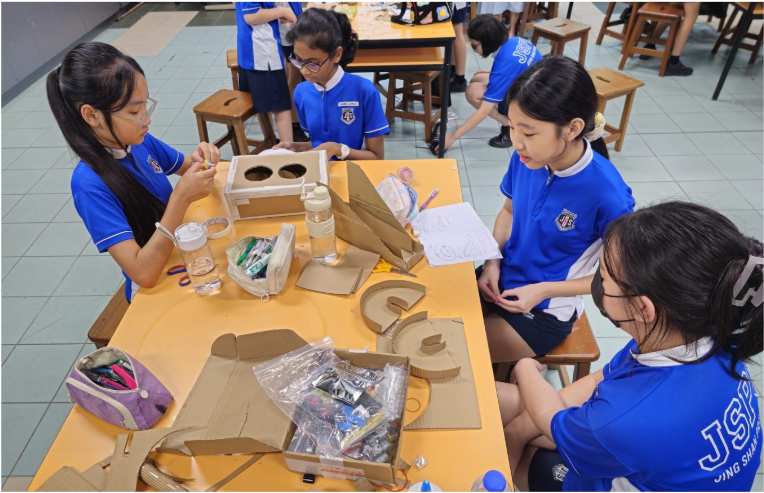
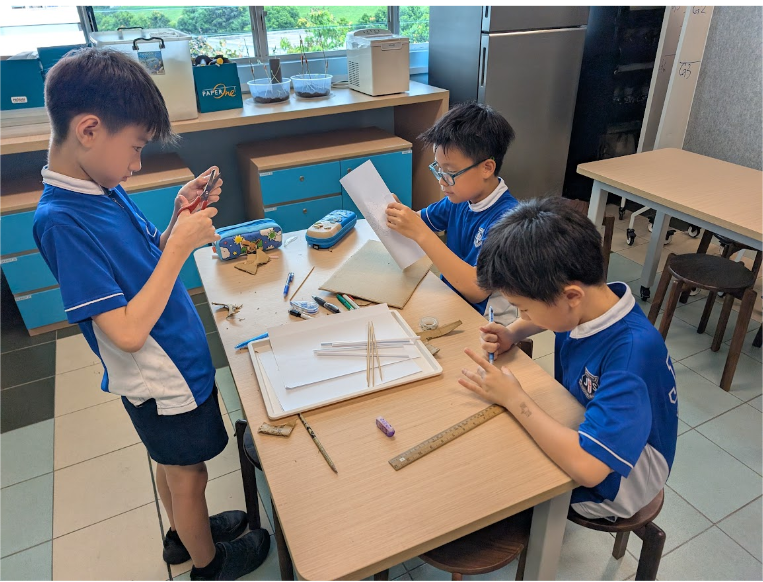
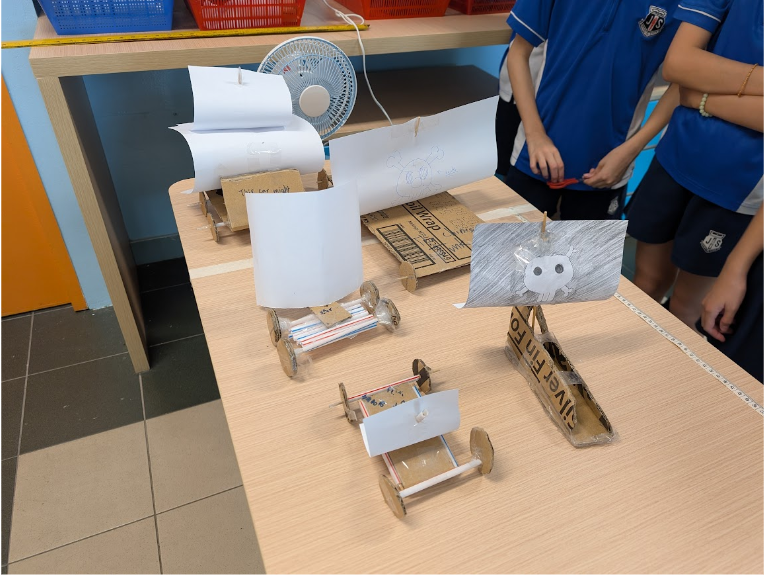
JS Makerspace
To support the programme, the JS Makerspace serves as the heart of student design engagement. Students participate in recess activities in the Makerspace, engaging in exploratory and self-directed activities using tools such as 3D pens and LEGO bricks. The Makerspace also curates making tools such as 3D printers and computer-controlled cutting machines for students to embark on specialised projects.
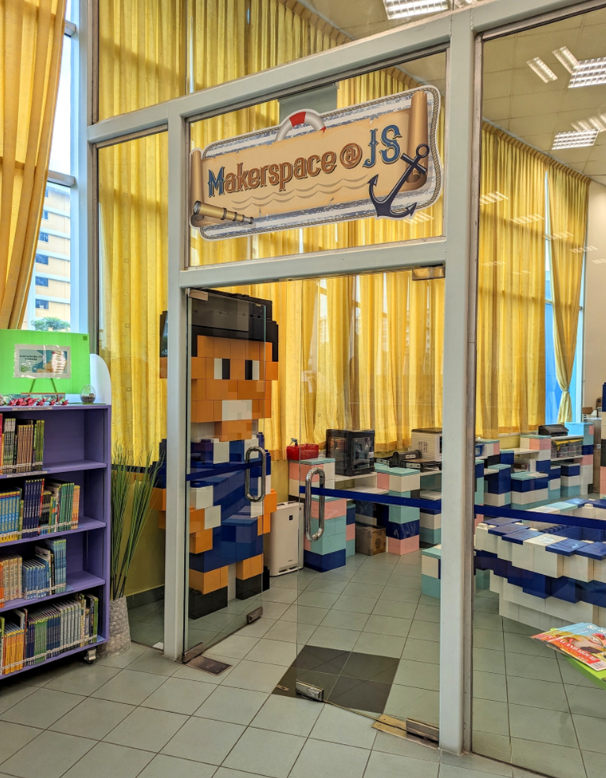
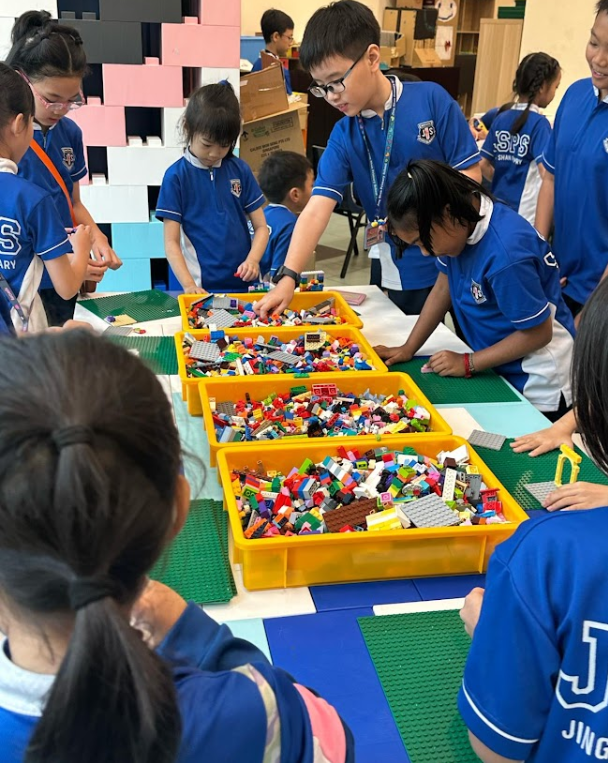
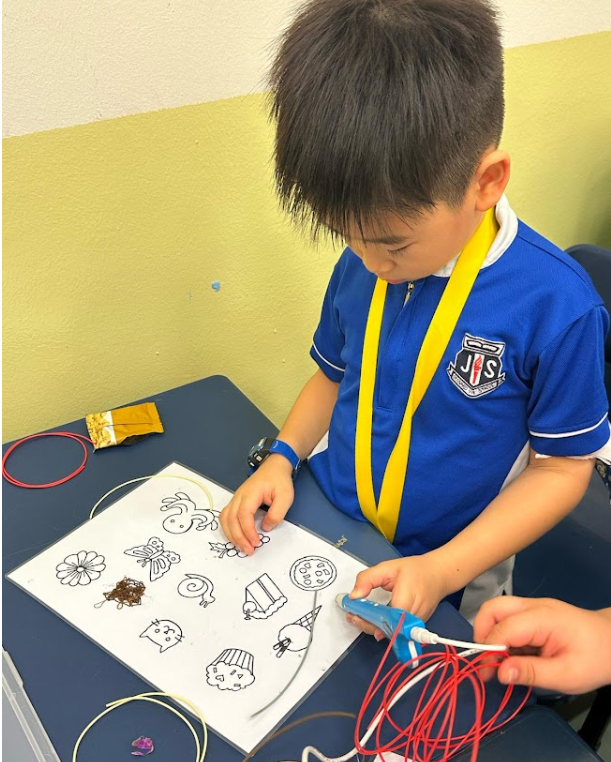
Through the JS Design Education programme, we aim to develop students
who are critical and inventive thinkers, strong in communication, collaboration and information skills.

